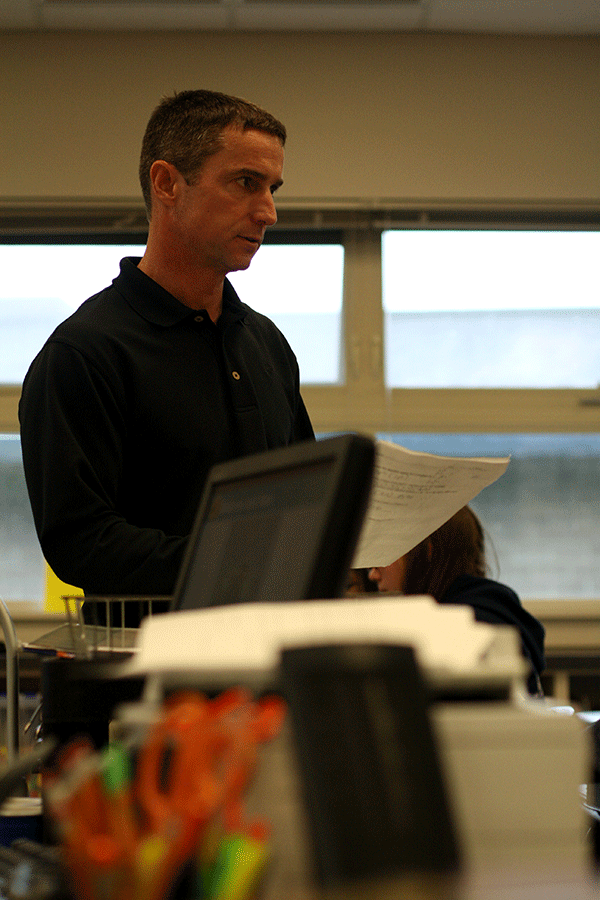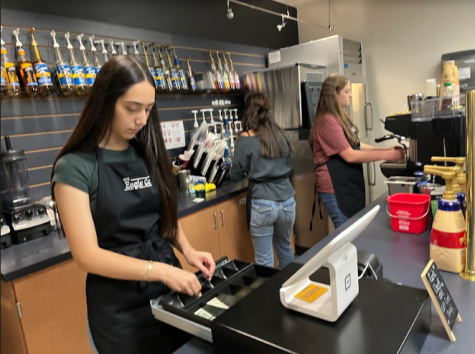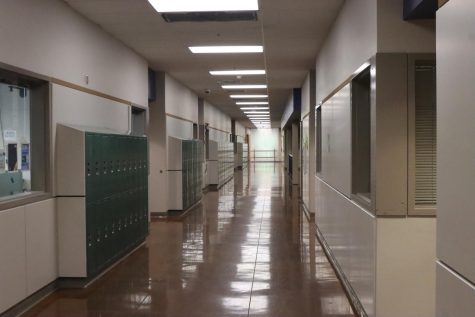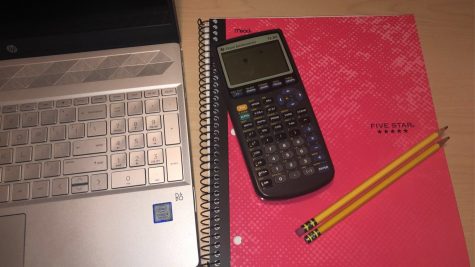Training for the Transition
Mr. Nelson listens to a student’s question while going over a test as a class. Tests and quizzes account for 80% of the students grade, similar to college classes where exams account for the majority or even entire grade.
For the first time at Arlington High School, Algebra II is the last math class taken before receiving college credit. Equivalent to taking a Math 95 class in college, Algebra II is the basis for higher level college math. This explains why the course is so rigorous for a large number of students at AHS. Now designed as a pre-college course, the curriculum is structured likewise.
Mr. Nelson plans to simulate the experience of having a college professor by shifting more of the learning responsibility onto the students. Also, students will have the opportunity to be exposed to math questions sampled from the PSAT and SAT. This is another way that Mr. Nelson plans to prepare students for math beyond high school. Along with having Mr. Nelson as a teacher, students have a wide variety of resources available to them online on Moodle, and also in the textbook. Since college math classes stress independant note-taking more heavily, Mr. Nelson hopes to loosen the reins on his students this year and help them become more self sufficient as learners by encouraging them to take advantage of resources on their own.
“Homework is practice,” Mr. Nelson says. “In this class, your grade is based on your performances on quizzes and tests.”
Math classes in college vary on homework policies. Many professors do not grade the homework they assign; expecting students to complete as much as they need as practice for themselves. Learning to use the homework to study and solidify skills and concepts independently is a key discipline, especially during Chapter 8, which Mr. Nelson says is the most difficult chapter.
Chapter 8 addresses rational and radical functions. Without delving too deep, rational functions are functions with fractions in them. “Things get difficult when you mix fractions and Algebra,” Mr. Nelson says. Many students are weak with fractions, so things become especially challenging when new Algebra concepts are compounded. Equally challenging are radical functions: functions involving square roots, cube roots, 4th roots, etc.
Hope is not lost though. There are many resources available for students to access online via moodle. Also, quizzes taken on moodle can be retaken to improve grades and, more importantly, solidify learning concepts before the test. Ultimately, the recipe for success in a class like Algebra II is to use the homework for it’s intended purpose. Studying for math requires repetition. Although it sounds cliche, practice makes perfect.











